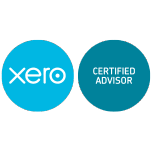Motor vehicle expenses
The deductibility of motor vehicle expenses is given special treatment by the IRD reflecting the widespread use of the motor vehicle as a business asset and the ease with which users can be switched between business and private purposes.
Records needed to be kept to ensure accurate claims are made
Self-employed individuals need to keep complete and accurate details of motor vehicle mileage and running expenses incurred.
Such details should include invoices for:
- The purchase of the vehicle;
- Any permanent extras added to the vehicle;
- Lease agreements where applicable;
- All running costs including details of petrol and maintenance; and
- The types of expenses that are likely to be deductible include fuel, oil, repairs and maintenance (tires, servicing, parts, panel beating, cleaning, and so on), insurance, warrant of fitness fees, registration fees, road user charges, and parking.
Car parks
The IRD has confirmed that the cost of leasing a parking space for a business vehicle is deductible.
According to the IRD, if a car is used extensively for business purposes, a deduction will be allowed for the cost of using a parking space. However, merely using a car as a matter of convenience for travel between home and place of business, is private usage and not deductible.
Deductible expenses
If you use your motor vehicle partly for business purposes and partly for other purposes, only the proportion of the total motor vehicle expenditure (including depreciation) that relates to the business use may be claimed as a deduction.
The business proportion must be determined by either maintaining a record of all business use or by keeping a logbook of business use for a 3-month test period every 3 years.
You may choose between these two options.
If a motor vehicle is not used for private or other non-business use or is not providing a fringe benefit, then no apportionment is required.
Only self-employed individuals (including partners in a partnership) are required to apportion their motor vehicle expenditure.
Logbook and record-keeping
There are two options available to ensure that all motor vehicle expenses are claimed
1. Logbook for a full year
One option for determining the business use proportion of a motor vehicle is for you to keep a record of all business trips made in the vehicle during the income year. You must maintain a complete and accurate record of the reasons for and the distances of all business trips, and any other details that may be required by the IRD. The business use proportion for the income year is the total distance of all business trips during the year divided by the total distance traveled by the vehicle during the year.
2. Three-month test period
Another option, where you use a vehicle for a combination of uses, is to instead keep a logbook for 90 consecutive days only, generally commencing on the first day of the income year in which you commence to keep the logbook. A record of the total distance traveled in the motor vehicle during the logbook application period must be kept.
The business use during the 3-month test period is treated as representative of business use for the whole of the income year.
The maintaining of a logbook does not remove the requirement to keep records verifying the expenditure incurred, but simply apportions the use of the vehicle between business and private use, to determine the deductible expenditure.
A logbook must:
- Be kept for not less than 90 consecutive days, commencing on a date selected by you;
- Record complete and accurate details of the reasons for and the distance of business trips, and any other details required by the CIR;
- Record the total distance traveled by the motor vehicle during the period the logbook is maintained; and
- Be kept for a period that represents or is likely to represent the average proportion of travel, for business and non-business purposes, of that motor vehicle for the logbook application period.
The “logbook application period” is the period for which the business-use proportion established by a logbook will be used for apportioning motor vehicle expenses. The logbook application period cannot exceed 3 years.
Note: If there are no records that can be used to establish actual business use, no deduction will be allowed.
Tax planning
Much of the tax planning effort about motor vehicles involves attempts to minimize exposure to FBT.
Motor vehicles may be “acquired” as business assets in several different ways including outright purchase, hire purchase, operating lease, and finance lease. Another alternative is for employers to reimburse the running costs of vehicles owned by employees. Each option has different tax consequences which can be quite complex, involving income tax, FBT, and GST considerations.
See Us First
- Before making any decisions regarding motor vehicle purchases.
- We can assist you in understanding the legal or financial implications.
- If you consider that any of the issues contained in this fact sheet may affect you.


